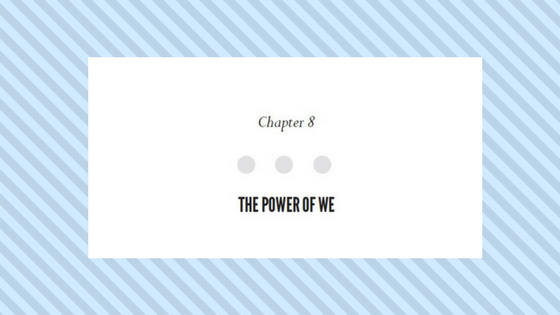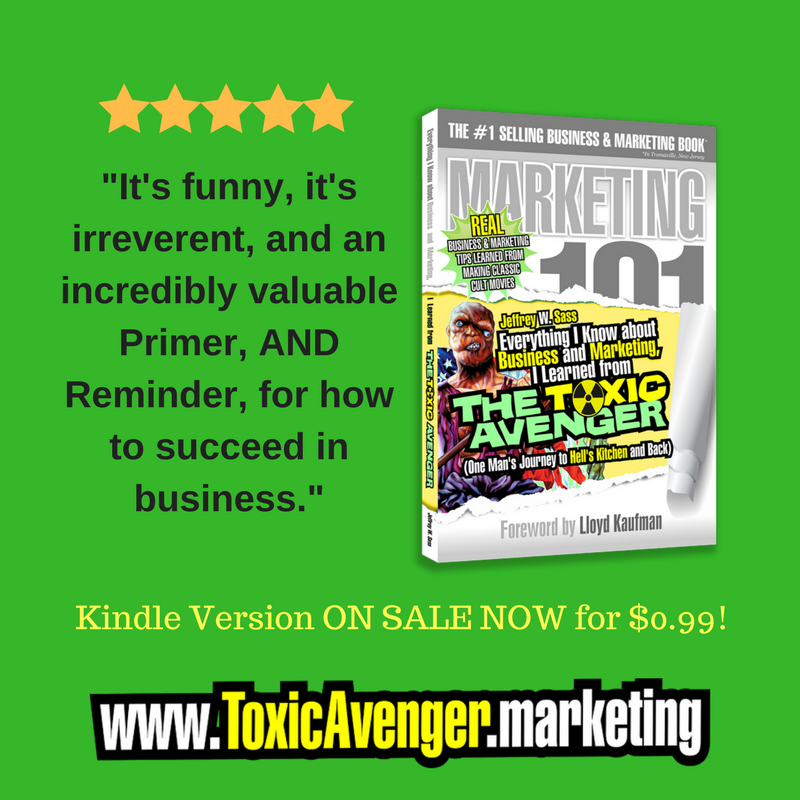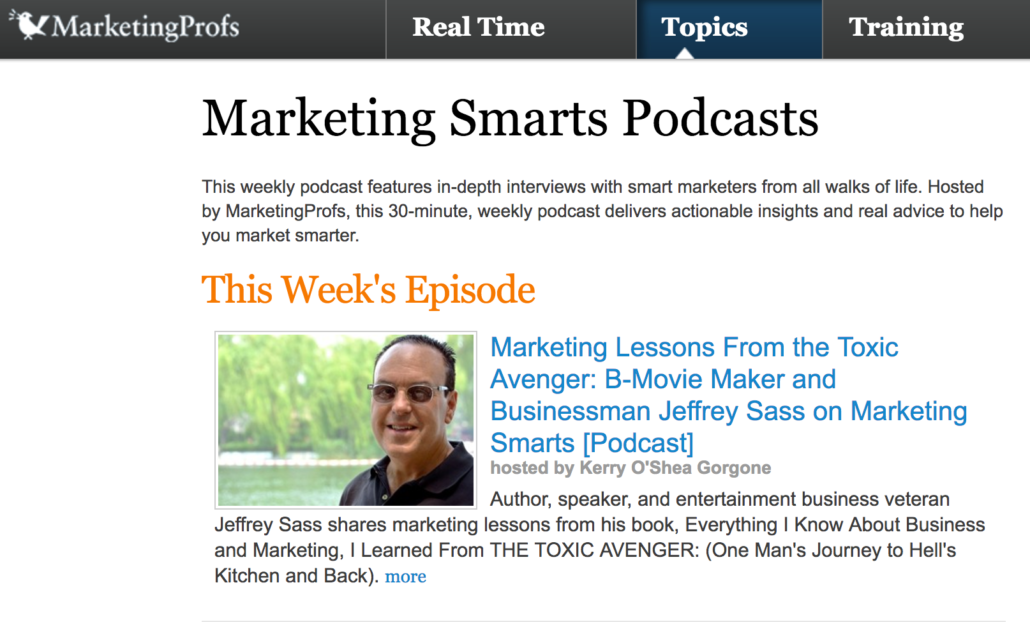Chapter 8: The Power of We
Greetings from Tromaville! Here is Chapter 8 from my book, Everything I Know about Business and Marketing, I Learned from THE TOXIC AVENGER. While a short one, this is one of my favorite chapters in the book and one I am most often asked about when I’ve done interviews about the book. It is also one of the more powerful lessons I learned while working for Troma, and something I still try to practice in my business dealings today.
If you haven’t done so already, you can read the Foreword by Troma co-founder, Lloyd Kaufman, and the Introduction to the book as well as Chapter 1, 2, 3, 4, 5 and 6, and 7. You can also see me read a few chapters live, along with Lloyd and Toxie, at Florida Supercon as well as a few chapters I read on Facebook Live. Stay tuned for additional chapters to be published here. If you like what you read and can’t wait for more, please don’t be shy. You can buy the book now on Amazon (and also please don’t be shy about sharing, and reviewing the book when you do read it.) Both Toxie and I greatly appreciate your support! – Jeff Sass
Chapter 8: The Power of We
Wheee! Rather, “we.” If Troma were to publish their own Elements of Troma Style, two things would happen. First, William Strunk Jr. would roll over in his grave. Second, the book would begin with the statement, “Never, ever, ever, say ‘I’ when speaking or writing on behalf of the Troma Team. It is always ‘we.’ There is no ‘I.’”
This simple rule was enforced by Lloyd as if it were gospel. More than gospel, as if it were the single most important thing above all other important things. As if by violating this one seemingly simple rule, one would be engaging in the most heinous act of corporate malfeasance. In Tromaville saying, “I” was a crime. You as an individual did not exist. Only the Troma Team existed. You did not do anything. Whatever you think you may have done, you didn’t do it. We did. We, we, whee!
If Lloyd caught wind of a letter going out with “I this” or “I that” in it, he would go ballistic. It didn’t matter who you were or what the topic or contents of the correspondence was; you had to use “we” instead of “I.” Always. Without exception. And that went for Lloyd’s own correspondence as well. In Tromaville, though seemingly a royal pain in the ass, the use of the Royal “we” reigned supreme.
And it was great. And it was a great lesson, not only in building a brand but also in creating a culture. Think about it. By enforcing this one simple rule, the notion of being a part of a team was deeply instilled in every employee at every level. From unpaid students and interns to barely paid senior executives, we were all collectively the Troma Team. Everything we did was to support the Troma Team.
As important was the subtle message this consistent use of “we” instilled in the outside world, even if they didn’t quite realize it. Something was different and special about Troma, and you could sense it from every letter or e-mail that always started with “Greetings from Tromaville” and never put self ahead of team. And once you got used to it, it felt better to say “we” than “I.” We were a team and saying “I” felt like you were taking something away from the group. On the other hand, after a while, saying “we” made you feel good. It reassured you that you were indeed part of a tribe (albeit an odd and sometimes creepy one).
To this day, I prefer to say “we” in business correspondence, and it took me a long time after my tenure in Tromaville to not feel a touch of guilt when I wrote “I” in a business letter or e-mail. In truth, “we” is often much better and more accurate. Just like making a movie, business is a very collaborative process. Unless you are truly a sole proprietor, it is unlikely that there are many, if any, business projects or accomplishments that are truly achieved by you alone. If you are an employee or an employer, you are part of a team, and for most things you might take credit for, just saying “I” is a bit disingenuous. And even if you had the lead or did most of the work yourself, saying “we” lets you share the love, and sets a great leadership example. Even today, I often find myself cringing in meetings when I hear someone spouting “I did this” and “I did that” when I know, as does everyone else in the room know, that the person shining the light on him or herself had lots of help from other members of the organization.
Here’s an exercise: Go forty-eight hours deliberately using “we” instead of “I,” and see what happens. How does it make you feel? How do your coworkers and others treat you when you credit “we” for everything?
•••
That’s Chapter 8 – Yes, another short and sweet one (are you seeing a pattern here? This book is an easy, enjoyable read!) Stay tuned for “Chapter 9: Old Yeller (and Be Your Brand)” where we learn a valuable lesson about consistency and branding (and working with a screamer).
The book in previous posts:
Foreword, by Lloyd Kaufman
Introduction: Lights, Camera, Action!
Chapter 1: Welcome to Tromaville!
Chapter 2: The Troma Building
Chapter 3: Meet the Moguls
Chapter 4: Trailer Trash
Chapters 5 and 6: Working FREE-lance & Becoming a Full-time Tromite
Chapter 7: Branding Begins on the Ground Floor











